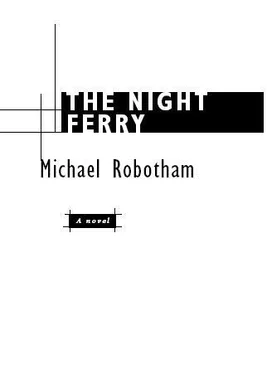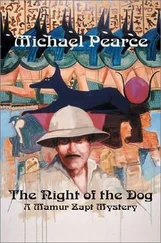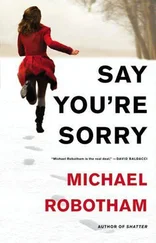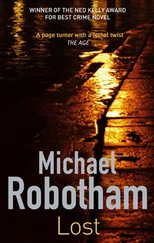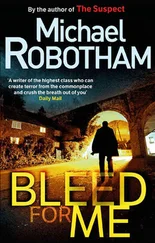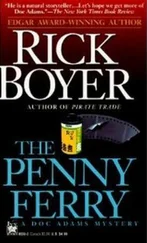Already I am falling for Amsterdam. It is prettier and cleaner than London with its cobbled squares, canals and wedding-cake façades. I feel safer here: the anonymous foreigner.
“Often people want tours of the red light district,” Hokke explains. “Writers, sociologists, foreign politicians. I take them twice—once during daylight and again at night. It is like looking at different sides of the same coin, light and dark.”
Hokke has an ambling gait with his hands clasped behind his back. Occasionally, he stops to point out a landmark or explain a sign. “Straat” means street and “steeg” means lane.
“This was your beat?” asks Ruiz.
“Of course.”
“When did you retire?”
“Two years ago. And you?”
“A year.”
They nod to each other as if they share an understanding.
Turning a corner, I get my first glimpse of Amsterdam’s famous “windows.” Initially, they appear to be simple glass doors with wooden frames and brass numbers. The curtains are drawn across some of them. Others are open for business.
Only when I draw closer do I see what this means. A skinny dark woman in a sequined bra and G-string is sitting on a stool with her legs crossed and boots zipped up to her knees. Under the black lights the bruises on her thighs appear as pale blotches.
The blatancy of her pose and her purpose diminishes a small part of me. She watches me aggressively. She doesn’t want me with these men. I will stop them coming to her door.
Negotiating more of the narrow lanes, we pass windows that are so close on either side that it is like being at a tennis match and following the ball back and forth across the net. In contrast, Ruiz looks straight ahead.
A large Dominican woman calls out to Hokke and waves. Dressed in a red tasseled push-up bra that underpins a massive bust, she is perched on a stool with her legs crossed and stomach bulging over her crotch.
Hokke stops and talks to her in Dutch.
“She has four children,” he explains. “One of them is at university. Twenty years a prostitute but she’s still a woman.”
“What do you mean a woman?”
“Some of them turn into whores.”
He waves to several more prostitutes, who blow him kisses or tease him by slapping their wrists. Farther down the street an older woman comes out of a shop and throws her arms around him like a long lost son. She presses a bag of cherries into his hand.
“This is Gusta,” he explains, introducing us. “She still works the windows.”
“Part-time,” she reminds him.
“But you must be—”
“Sixty-five,” she says proudly. “I have five grandchildren.”
Hokke laughs at our surprise. “You’re wondering how many customers would sleep with a grandmother.”
Gusta puts her hands on her hips and rolls them seductively. Hokke looks for a polite way to answer our question.
“Some of the younger, prettier girls have men queuing up outside their windows. They are not concerned if a man comes back to them. There will be plenty more waiting. But a woman like Gusta cannot rely on a sweet smile and a firm body. So she has to offer quality of service and a certain expertise that comes with experience.”
Gusta nods in agreement.
Hokke doesn’t seem to resent or disapprove of the prostitutes. The drug addicts and dealers are a different story. A North African man is leaning on the railing of a bridge. He recognizes Hokke and dances toward him. Hokke doesn’t stop moving. The African has betel-stained teeth and dilated pupils. Hokke’s face is empty, neutral. The African jabbers in Dutch, grinning wildly. Hokke carries on walking.
“An old friend?” I ask.
“I’ve known him thirty years. He’s been a heroin addict for this much time.”
“It’s remarkable he’s still alive.”
“Addicts do not die from the drugs, they die from the lifestyle,” he says adamantly. “If drugs were less expensive he wouldn’t have to steal to afford them.”
On the far side of the bridge, we meet another junkie, younger and even less appealing. He points the glowing end of a cigarette at me and talks to Hokke in a wheedling voice. An argument ensues. I don’t know what they’re saying.
“I asked him if he was clean,” Hokke explains.
“What did he say?”
“He said: ‘I am always clean.’”
“You argued.”
“He wanted to know if you were for sale.”
“Is he a pimp?”
“When it suits him.”
We reach the café and take a table outside under the bare branches of a large tree that is threaded with fairy lights. Hokke drinks his coffee black and orders a slice of sourdough toast with jam. Afterward, he fills a pipe, so small that it seems almost designed for an apprentice smoker.
“My one vice,” he explains.
Ruiz laughs. “So in all those years you were never tempted.”
“Tempted?”
“To sleep with some of the women in the windows. There must have been opportunities.”
“Yes, opportunities. I have been married forty years, Vincent. I hope I can call you Vincent. I have slept with only my wife. She is enough for me. These women are in business. They should not be expected to give away their bodies for free. What sort of business-woman would do that?”
His face almost disappears behind a cloud of pipe smoke.
“This girl you want to find, you think she might be a prostitute?”
“She was trafficked out of Afghanistan.”
“Afghani prostitutes are rare. The Muslim girls are normally Turkish or Tunisian. If she is illegal she won’t be working the windows unless she has false papers.”
“Are they difficult to get?”
“The Nigerians and Somalis swap papers because they all look alike but the windows are normally the easiest to police. The streets and private clubs are more difficult. It is like an iceberg—we see only the tip. Beneath the waves there are hundreds of prostitutes, some underage, working from parking lots, toilets and private houses. Customers find them through word of mouth and mobile telephones.”
I tell him about Samira disappearing from the care center.
“Who brought her to the Netherlands?” he asks.
“Traffickers.”
“How did she pay them?”
“What do you mean?”
“They will want something in return for smuggling her.”
“She and her brother are orphans.”
He empties his pipe, tapping it against the edge of an ashtray.
“Perhaps they haven’t yet paid.” Refilling it again he explains how gangs operate within the asylum centers. They pick up girls and turn them into prostitutes, while the boys are used as drug runners or beggars.
“Sometimes they don’t even bother kidnapping children from the centers. They collect them for the weekend and bring them back. This is safer for the pimps because the girls don’t disappear completely and trigger an investigation. Meanwhile, they are fed, housed and learn a bit of Dutch—paid for by the Dutch government.”
“You think that’s what happened to Samira?”
“I don’t know. If she is young she will be moved between cities or sold to traffickers in other countries. It is like a carousel. Young and new girls are prized as fresh meat. They generate more money. By moving them from place to place, it is harder for the police or their families to find them.”
Hokke gets to his feet and stretches. He beckons us to follow him. We turn left and right down the cobbled lanes, moving deeper into the red light district. More windows are open. Women tap on the glass to get Hokke’s attention. A Moroccan shakes her breasts at him. Another slaps her rump and sways to a song that only she can hear.
“Do you know them all?” I ask.
He laughs. “Once perhaps, yes. I heard all their stories. Now there is a kind of wall between the police and the prostitutes. In the old days most of them were Dutch. Then the Dominicans and Columbians moved in. Then the Surinamese. Now we have Nigerians and girls from Eastern Europe.”
Читать дальше
